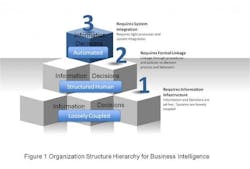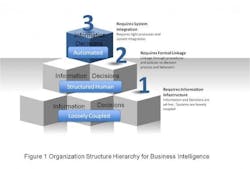Quality Circle: A Primer for Business Performance Management
Most organizations within our industry have resigned themselves to the concept that operational excellence must be part of any strategic plan to remain competitive. In some way, the wholesale consolidation and movement in the U.S. pharmaceutical marketplace presents us with an unusual opportunity to address many of the endemic weaknesses of our operating and quality systems that have up to this point been sacrosanct in terms of improvement. Inefficiencies in our development, manufacturing, and quality philosophies have been at the heart of much of the consolidation activity in the U.S., and have fueled the growth of competition in emerging markets.
But low cost manufacturing isn’t the only factor that drives success in our marketplace. High-profile missteps such as the Baxter Heparin adulteration and the Ranbaxy FDA regulatory action underscore that there is more to being competitive in the global marketplace than making drugs cheaply.
What has emerged from this journey is a newfound appreciation for business performance. Achieving business performance is not the result of a single process but is rather an amalgam of many processes. Business Intelligence (BI) tools have been evolving for many years and today there is almost no limit to the data that can be made available for business analysis. Many companies have integrated dashboards and the visual factory at some level. Pockets of operational excellence exist in most organizations with an eye toward focused improvement of tangible areas that have been identified as impediments to business success.
Yet, despite these tools, the industry finds itself struggling to focus its strengths and be competitive. I believe this can be attributed in large part to a discontinuous focus on performance management. The field of performance management can be summarized as the systems within an organization that align business activity with corporate objectives.
Historically, performance management has focused on the tools for data mining and data gathering. However, in most cases, the ROI for these endeavors is limited or localized to a specific department or business unit.
Coordinated Performance Management
The reason most business performance management (BPM) efforts fall short is the lack of a coordinated framework that can align the culture and decision-making processes with the data and analytical tools used to steer the business. Firms that choose to invest in automated BI systems may fall short in achieving the kind of business performance required because the tools and data cannot be fully leveraged without a framework for applying the information. So, as organizations invest in formal business performance tools and systems, the need for infrastructure must grow as well.
A hierarchy between the organizational component and the BI tools is shown in Figure 1. In this model, initial grass roots efforts at measuring and monitoring business key performance indicators (KPI) require some standardization in terms of how the data is gathered. However, the linkage between information gathering and decision-making is often loose at best. As the activities around BPM grow, a more formal organizational structure is necessary to leverage the data. This level of organizational maturity requires a more defined linkage between data and decision-making.
This linkage will naturally identify deficiencies and inefficiencies in executing decision-making which could drive the organization to the highest level of sophistication where the IT infrastructure, data gathering and decision-making processes are very clearly linked and managed. At these levels, the success metrics for performance are well defined, whether the process is data gathering, KPI establishment, analytics or decision-making.
- Centralized KPI database
- Centralized business performance database, with access to both strategic and operational data
- Agile project management: BPM needs to be nimble enough to allow iterative adjustment.
Organizational Training: Understanding the role KPIs play in achieving business performance is essential to realizing business performance objectives. The new pharmaceutical and biotech organization is very different from those of thirty years ago. Understanding the impact cross-functional processes have on business performance, and more specifically the impact on the customer and new product development, is the driving force behind using systems such as Balanced Scorecards.
However, most organizations fail to capitalize on the full potential of these systems and their BI investment because of the lack of structure around the decision-making process itself. If senior management does not subscribe to the same data-driven accountability model that the rest of the organization does, it will be very difficult to garner full buy-in to achieving performance management. The most obvious example of this breakdown is during budgeting exercises. In the absence of a centralized financial database available to all participants the decision-making process can easily appear subjective and, in some cases, actually inhibit the ability to leverage business performance opportunities identified through focused analytics.
This highlights another weakness in most business performance programs: analytics. In a previous article, I discussed how business analytics can catalyze business performance. Analytics is much more that just measuring and reporting data. Analytics as a catalyst for business improvement means transforming an organizations decision-making process with the end goal of making analytics the foundation of the organization’s business strategy and tactics. Without this integration, it becomes very difficult to calibrate the effectiveness of the BPM program other than measuring quarterly financial performance, which is not a very good indicator of BPM. As I noted in my previous article, the correlation between integrated analytics, BPM and business performance is very strong.
To achieve a higher level of performance management, some training in BPM is recommended. Most high-performing organizations need some guidance to determine which KPIs are truly indicative of business performance and how best to utilize them in the decision making process. As this understanding grows it will ensure the IT architecture of your BI investment is aligned with evolving requirements of your business strategy.
Conclusion
The principles of operational excellence—including Lean and Six Sigma methodologies—highlight the value of measuring and monitoring processes in order to drive performance. To date, this data and analysis have not been broadly orchestrated across the operational and strategic activities that dictate near term and long-term business performance. If the industry is going to make the leap to competitiveness in the global marketplace, a formal framework for performance management will become essential. Investing in centralized knowledge management systems for sharing and analyzing operational and strategic data, that are agile enough to grow as the business analytic sophistication grows will move your organization toward systems that are both efficient and effective. Anything short of this will result in the illusion of business performance, leaving your organization vulnerable to competition in the future.





